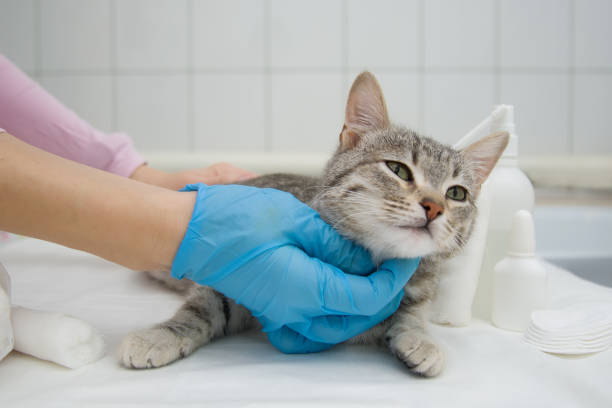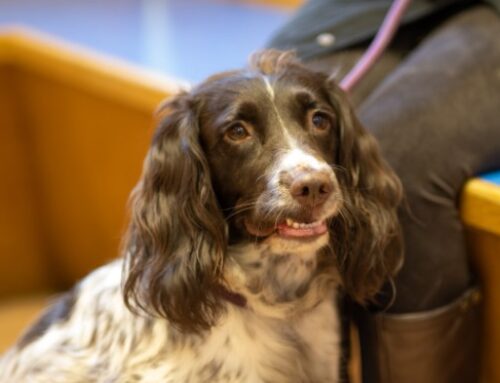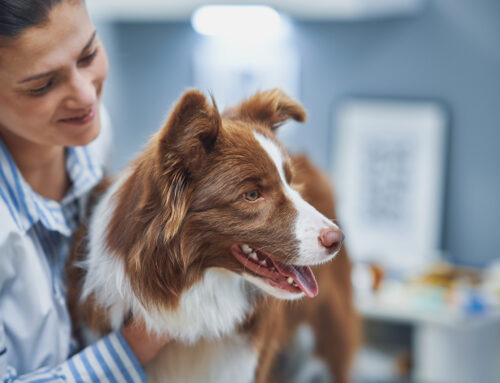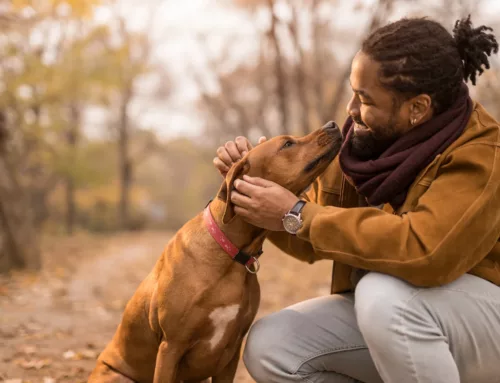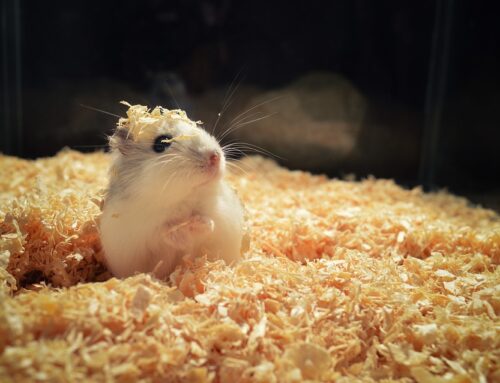You may be nervous about pet spay and neuter, but it is a very important part of looking after your dog. Hopefully, once you understand exactly what will happen to your pet, you’ll feel more confident about bringing them in for their pet neutering procedure.
Before the Surgery
Vets like to be sure their patient is in the right condition for neutering before they schedule the surgery, so you’ll likely have an appointment first and can discuss this at puppy checkups. This is where your pet will be carefully examined and any health risks assessed. This is also when your vet will let you know if you need to wait due to your female pet being in season or pregnant.
You will be given a paper with instructions for the appointment date. This usually requires avoiding any food for 10-12 hours before the surgery and no liquids for a shorter period of time beforehand. The reason for this is that the vet doesn’t want your pet aspirating any vomit during the procedure, which could cause more complications.
Arrival at the Clinic
On the day of the appointment, you’ll bring your pet to the clinic and give them over to the vet. You should arrive a little before the appointment is scheduled so you can fill in any paperwork needed and talk to the vet about any concerns you have.
You can usually go home after this and return to pick up your pet later in the day or the next morning, depending on the time of the procedure and the animal’s health.
At this point, your pet will be given an injection which is meant to reduce pain and help make your pet sleepy. This will reduce stress on the patient and relax them considerably. You may be allowed to stay during this part of the procedure and your pet will fall asleep easily.
Prepping and Anaesthesia
Your pet will either be intubated with a breathing tube or a face mask will be placed over their face with anaesthesia to help them stay under. Dogs are usually intubated while cats use face masks because they are smaller and it is a rapid procedure.
Your pet will be connected to a machine to ensure the vet can keep an eye on their oxygen level and heart rate. This will ensure that any complications are immediately noticed and addressed. Once the animal is asleep, they are placed on a heated blanket to keep them comfortable.
Now, your vet’s assistant will carefully clip the hair in the area where the incision will be made. This is to make it easier to see what they are doing and to keep the area as clean as possible.
With the area shaved, the hair is removed and then the assistant will use a disinfecting solution to clean the area. This is applied in a circular motion, moving out from the incision point to keep any dirt or hair away from the place where the vet will cut.
Now, the assistant lays a sterile surgical drape over your pet, leaving the area for the surgery exposed. At this point, the vet can come in and begin their work.
Surgeon Preparation
Your vet will treat this much like a human doctor would treat a human surgery. There is a process for scrubbing in and clean gloves are worn. All instruments to be used are sterile and everything in the surgery is kept as clean as possible to avoid contamination.
The vet wants to keep everything neat and tidy to ensure their patient is in the best condition after the surgery.
Male Neutering: The Procedure
Neutering a male animal is much simpler than neutering a female. This is because the testicles are already outside of the body in most cases and descended into the scrotum. The vet merely needs to make a small incision in the skin just ahead of the scrotum and slip the testicles one by one out of the incision. This single cut is made to the skin, rather than the scrotum because this area is quite sensitive and bleeds easily.
Your dog or cat may have either an open or closed castration. The open version is where the membranes around the testicle, called the vaginal tunic, is cut open so that everything can be seen very well. This allows for easier bleeding control, as the blood vessels may be tied off easily, as they can be seen quite well.
The closed castration requires the vet to tie off the vaginal tunic complete with the spermatic cord and other structures at once. In both cases, several knots are used to keep the area from bleeding once cut.
To tie off the vessels, the vet will carefully press the testicle out through the incision made. This allows for full access to everything and once the knots are made, the testicle is removed carefully. The same procedure is repeated with the second testicle.
Finally, the vet can look through the scrotum and ensure there is no bleeding and it’s time to close everything up. They will use a dissolvable suture to stitch the incision closed in layers, beginning with the subcutaneous tissue. Then the next level will close the incision completely. Sometimes, surgical glue is used to keep the stitches under the skin where they will eventually dissolve. In some cases, external stitches are made and these will need to be removed in ten days or so.
Before your pet is moved to recovery, the vet will ensure there is no bleeding and nothing looks wrong with the incision site.
Female Neutering: The Procedure
Female dog neutering is known as spaying and while the procedure has the same result, it’s quite different from male neutering. In this case, the incision will be larger, as the vet must reach more areas.
The procedure begins as it does with the males, but the incision is made starting below the animal’s belly button. This incision will be longer than the male, as the uterus and ovaries or just the ovaries must be removed.
The vet will usually break apart the ligaments holding the ovaries, then clamp them similar to the way the testicles are clamped and tie them off. At this point, the ovaries may be incised, just like the testicles.
If your vet is also removing the uterus, they will find the two uterine horns (in a female dog castration) and find the cervix. They’ll then clamp this area and stitch to prevent bleeding in the future. The entire uterus must be removed or your pet could have issues later on. For this reason, most vets will remove all or part of the cervix in order to be certain it’s all out.
Once the vet is satisfied that there is no bleeding and everything necessary has been removed, they will begin to stitch the animal’s incision closed. This is done in several layers to ensure the skin and abdominal space is correctly closed. Again, it’s possible to use tissue glue on the outer layer to keep the stitches hidden.
Post-Operative Recovery
Now that the pet neutering is over, your pet will have their breathing tube taken out or their mask removed and will be placed on a heated blanket to wake up gradually. It’s common for them to be a little out of it for a while, but you’ll usually be able to take your pet home shortly after they’ve woken.
The recovery period from the anaesthesia is relatively short and the vet simply needs to ensure that there are no complications. You may take your pet home, but they’ll need to be kept quiet for a few days.
It’s important to have a calm area for your pet to rest, away from other animals or children. They should be kept comfortable and offered a little water or bland food from time to time. Some animals have nausea after the procedure, but this should fade over the next few hours.
If you have any worries or questions, contact your vet to let them know how your pet is doing. They will let you know if you need to bring them back in. You may have to give medicine to prevent infection and to ensure your pet isn’t in pain, but within five to ten days, your pet should be back to their usual antics, but without the risks associated with possible mating.
Do you own a pet that needs to be spayed or neutered? At Bay Vets, we offer castration for all types of animals. Get in touch with us and make your appointment today!

